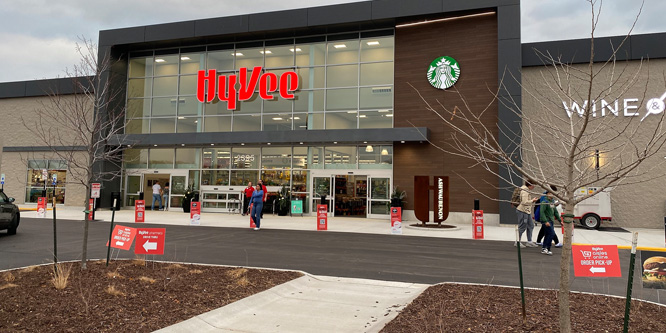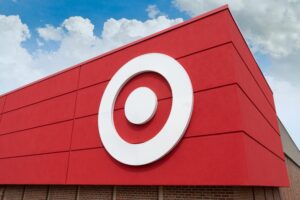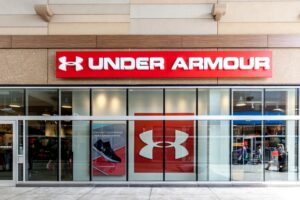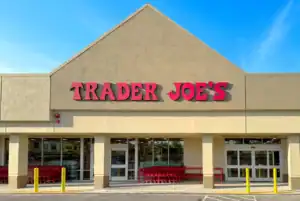
Photo: Wikimedia Commons/Mrschimpf
January 31, 2023
Hy-Vee uses tech and people to deliver a sense of awe in its stores
I got to chat with Randy Edeker, executive chairman, and CEO Jeremy Gosch of Hy-Vee, the 280-store chain in the Midwest, at the recent FMI Midwinter conference in Orlando.
Rather than ask about operations, competition or the financial shape of the company, I focused on technology and the customer experience. Here is the interview, edited for clarity.
What are the critical technologies grocery retailers need to be deploying right now and within five years?
Randy Edeker: Most of the discussion right now is really around retail media. This is a space that we’re going to have to focus on that naturally couples with e-commerce capabilities. We’ve been in e-commerce for almost a decade now, but it continues to improve. On the back end, there’s any number of tech assets, from forecasting supply chain, forecasting perishables and helping create just-in-time inventory systems around perishables. We’ve done a lot of work with shelf tags as a way of streamlining labor and taking costs out of the systems. We also need technology to improve self-checkout, reduce shrink and definitely employee communications.
Jeremy Gosch: When we opened Grimes (Iowa store), we put about 12 new technologies into it, including wayfinding, digital ordering kiosks, electronic shelf tags and recipe kiosks. There’s a lot of different avenues that we can use to enhance the customer experience.
How is Hy-Vee using tech to help with its biggest challenges — labor and customer engagement.
Randy Edeker: We’re using Workday for communicating directly to our employees, giving them flexibility and how they schedule, even how they get paid. We’ve moved to a weekly pay and daily pay is our next move for employees. We’re communicating much more digitally to our customers than we ever have in the past, and that’s both a perk and a challenge because digital is so segmented it’s hard to communicate to a large group of consumers at once.
How can grocery retailers best create “awe” in the store?
Jeremy Gosch: When you’re talking about awe, we do it through purpose, we do it through product, we do it through experience, we do it through service, things that really come together to make an experience in the store that we hope is different than what everybody else has.
Discussion Questions
DISCUSSION QUESTIONS: What are the biggest challenges and opportunities facing Hy-Vee and other regional supermarket chains? How can technology help them address those issues?
Poll
BrainTrust
Ken Morris
Managing Partner Cambridge Retail Advisors
Gary Sankary
Retail Industry Strategy, Esri
Mark Self
President and CEO, Vector Textiles
Recent Discussions







The biggest challenges are from changes to the supermarket business model like the pace of omnichannel development, shorter shelf lives and alternative food options coupled with traditional challenges generally related to backend operations, competitive pressures and workforce management. Technology can help in multiple areas, but I suspect that grocery stores may be in short supply of the ability and the people necessary to implement them. It sounds like Hy-Vee is managing all of it well and leveraging technology to support a sound and necessary business strategy.
For Hy-Vee and other regional supermarkets, it’s all about the unique brand experience. It’s refreshing how much focus Hy-Vee is putting on the employee experience, too. These guys get it. You don’t get to make the top ten list for grocery chains in the U.S. (Readers’ Choice Awards) without doing lots of things right. They’re not just adding tech for tech’s sake; they’re using it to support their business model and brand.
Digging a little deeper, Hy-Vee and their competitors face a labor market crunch unlike any other. To combat the challenge, Hy-Vee leverages technology that creates a frictionless environment that not only improves the customer journey but creates an associate-friendly experience as well. Innovations like daily pay and flex scheduling make it easier to work for them. With these solutions comes the challenge of things like controlling shrink and optimizing self checkout, but Hy-Vee appears up to the challenge.
Sounds like very thoughtful application of tech. Streamlining and simplifying the whole experience for customer and employee alike.
And I love the comment about how “digital is so segmented it’s hard to communicate to a large group of consumers at once.” That’s a very real recognition that blast emails can only talk to so many people at once. It’s a recognition that menus can vary wildly across a range of households. Another opportunity for personalization!
Today, the top challenge for grocers is staffing. Finding great team members to make the store run while provide outstanding customer experiences their customers is a challenge. In a tough labor market, it is essential to find technologies that help them do more with fewer people while balancing team member experience and workload. They must consider how they interact with team members from the initial recruitment and hire through their last day. Not easy.
Hy-Vee is very aware of this. Their stores are larger than most, they provide many high-touch services that enhance customer experience, all of which makes Hy-Vee a great place to shop. This also requires a seasoned staff of trained team members to make it work well. Hy-Vee is making the right moves here, innovating in scheduling and compensation to keep their teams engaged, and, I suspect, reducing turnover.
Regional brands potentially have an advantage in the “community” or “local” aspect to their markets. Traditionally, from a technology standpoint, they have been “outgunned” by larger players like Walmart (anyone who remembers the hand wringing that occurred over WM “killing” small merchants in the center of town — “The unfairness” of it all! can relate to this).
If you can roll out similar or better technology AND maintain the local or community approach to your markets, that sounds like a winning strategy to me. It sounds like Hy-Vee has figured that out in a way that makes sense to them as well as maintaining or increasing employee satisfaction.
Curiously, Mr. Edeker’s ideas don’t seem to mesh very well with our own: “e-commerce” were the first words out of his mouth, something that exactly zero percent of the poll respondents prioritized. (Although perhaps we’re all using the term differently.)
Cool technologies such as wayfinding, digital ordering kiosks, electronic shelf tags, recipe kiosks and the like can create a unique and interesting store, especially for younger shoppers. It may be a temporary competitive advantage in an over-stored marketplace. But is this really what most shoppers want? Or is it technology for technology’s sake? I believe the winning formula for grocery stores is outstanding customer service, quality perishables and good prices. That is where a grocer’s investment should be.